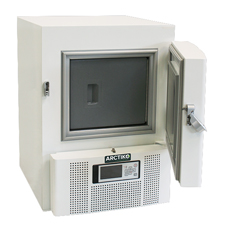Lab Start-up Guide
Being equipped with the correct tools is of the utmost importance when working in a laboratory but knowing what to buy and what to look for in your equipment isn't always easy. We've put together this guide to Essential Equipment for start-up laboratories to help you out on your journey. While your lab may be specialized and only require some of these items, it's good to know what other equipment is available. If you have any questions about the items listed below please reach out to us by email: info@cplabsafety.com or call us at (415) 883-2600.
| Autoclaves/Sterilizers Autoclaving is a must in most laboratories to ensure sterilization of laboratory equipment. Most autoclaves have a 15 – 20 min cycle in which the equipment and supplies undergo a pressurized saturated steam at 121°C (249°F). In the chemical industry, they can be used to cure coatings and vulcanize rubber. Shop Autoclaves/Sterilizers |
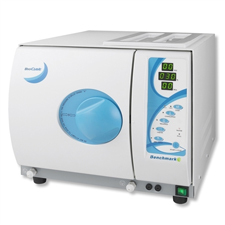 |
|
| Baths, Water A temperature-controlled water bath used to incubate samples of cell cultures, warm reagents, or melt substrates. It is also the safe option when heating up flammable chemicals, instead of an open flame, as it prevents the risk of chemicals igniting. The different types of water baths consist of circulating, non-circulating and shaking. Circular water baths are also referred to as stirrers – this type of bath is used when consistent, uniform temperature is highly critical for applications such as enzymatic and serologic experiments. A shaking water bath is normally used for microbiological practices with cell cultures. Shop Water Baths |
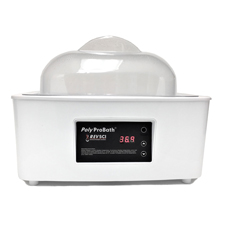 |
|
| Bench Top Solid Waste Containers A solid waste container with a lid is a convenient way to discard contaminated solid biological and hazardous waste right where you work. Not carrying contaminated items across a lab to a larger waste container lowers the risk of cross-contamination. The latching lid reduces solvent emissions from the waste inside, keeping the air you breathe safer and healthier. It is against the law to add chemically contaminated solid waste to the general trash in the laboratory, so it's ideal to have a smaller container nearby to segregate these wastes. Shop Bench Top Solid Waste Containers |
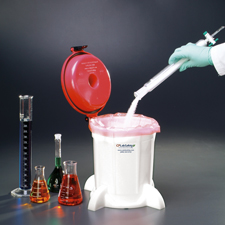 |
|
| Lab Grinders and Blenders Laboratory blenders are used for grinding, blending, processing and chopping laboratory samples. Shop Laboratory Blenders |
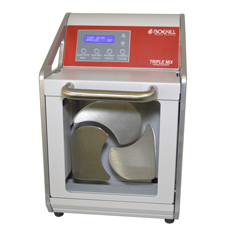 |
|
| Cell Counters Cell counters are a timely and accurate way to count live or dead cells in a culture. Researchers who work within a cell culture hood need a way to count cells and determine cell concentration. There are both automated and manual cell counters on the market. When selecting a cell counting system, it is important to carefully consider how well it will assess cell viability. Shop Cell Counters |
 |
|
| Centrifuges A centrifuge is a machine with a rapidly rotating container that applies centrifugal force to its contents, typically to separate fluids of different densities or liquids from solids. Centrifuges are available in various sizes and can be used at the industrial level for manufacturing and waste processing. Shop Centrifuges |
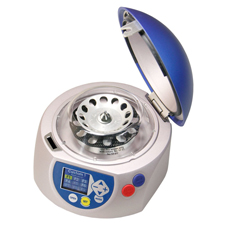 |
|
| Circulators/Chillers Much like water baths, circulators and chillers are used to keep samples or solutions at a certain temperature level. Circulators can be purchased for a variety of applications in both heating and cooling processes. Shop Circulators |
 |
|
|
Cryogenic Freezing |
Part# AK-US-DAI-1418 |
|
| Drum Feed Safety Clamps A safe, fast, effective way to increase the safety of a chemical feed system. The feed clamp securely attaches to the drum opening and securely holds the tubing in place. Outer clamp is made from polypropylene in various colors to allow for color-coding and reduce cross-contamination. Replaceable foam chemical filter prevents fumes from escaping and blocks particulates from contaminating the product. Ideal for anyone who uses drum feeds or Clean-in-place (CIP) methods. Drum Feed Safety Clamps are used widely in janitorial, food, pharmaceutical and chemical processing industries. Shop Drum Feed Safety Clamps |
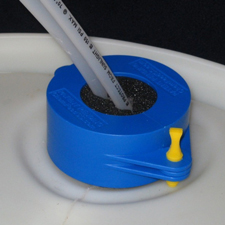 |
|
| Dry Block Heater Dry block heaters, also known as dry bath incubators, come in a variety of styles -most being compact for benchtop use. Like many of the other products listed for starting up a lab, dry block heaters are used to provide consistent temperature for a variety of applications. Most are made with aluminum alloy allowing for proper heat distribution. Typically used in molecular biology, clinical and environmental laboratories. Shop Dry Block Heaters |
 |
|
| ECO Funnels ECO Funnels® are used for safe, temporary storage of hazardous liquid waste. Unlike a regular funnel on an open waste container, this unique funnel attached securely to the container and blocks 99.9% of chemical emissions from escaping. Widely used in laboratories across the United States to helps labs comply with EPA and OSHA regulations. Many analytical chemistry laboratories use ECO Funnels that have been customized with HPLC/UPLC fittings to create a closed waste system. ECO Funnel reduces the risk of lab fires by blocking flammable airborne pollutants. It helps keep labs compliant and employees healthy and safe. Shop ECO Funnels |
 |
|
| Electrophoresis Systems Electrophoresis is used in laboratories to separate macromolecules based on size – normally with RNA, DNA and protein. The separation is performed using an electrical charge through a matrix typically made of agarose gel, polyacrylamide gel or capillary tubes. These systems contain all the items needed to perform the electrophoresis including: gel box or capillary tubes, power supply and buffer receptacle. When shopping for a system it is important to note the sample volume, type of sample, detection method, analysis system, laboratory space available and budget. Shop Electrophoresis Systems |
 |
|
| Environmental Testing Chambers Also known as a climatic chamber or a climate chamber, an Environmental Testing Chamber is used to test for environmental effects on test specimens, to prepare specimens for further physical and chemical tests or as environmental conditions for conducting testing of specimens. Manufactured samples, specimens, or components are placed inside the chamber and subjected to one or more environmental parameters to determine reliability or measure after-effects of the applied conditions. They are available in three different types of testing chambers:
|
 |
|
| Freeze Dry Systems In pharmaceuticals and biotechnology, freeze-drying is used to increase the shelf-life of products. These products are produced as lyophilized powders for reconstitution in vials and more recently in prefilled syringes. Active pharmaceutical product ingredients are also lyophilized to achieve chemical stability under room temperature storage. Freeze dry systems come in a variety of different sizes but all contain the basic components: Chamber, Process condenser, Shelf fluid, Refrigeration system, Vacuum system and control system. The typical freeze dryer comes in one of the three following varieties:
|
 |
|
| Fume Hoods Fume hoods provide local ventilation and capture hazardous toxic fumes, vapors and dusts. There are two different types of fume hoods available on the market: ducted fume hoods which exhaust the air to the outdoors, and recirculating fume hoods which rely on replaceable filters to capture contaminants. Fume hoods are typically used to:
|
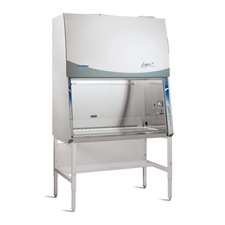 |
|
| Gas Generators Many labs are turning to local, on-demand gas generators instead of canisters for their hydrogen, nitrogen and zero-air requirements. On-demand gas has many advantages over canisters:
|
 |
|
|
Glassware Washers
Glassware washers often waste valuable resources when not chosen properly. They consume large amounts of water, so it is important to install the correct size, based on actual lab usage requirements, to minimize waste of both water and electricity. The purchase of a glassware washer should ideally happen after the glassware is purchased so the precise capacity required is already known, rather than buying an overly-large, wasteful unit. |
 |
|
| Hot Plates Hot plates are used in the laboratory to heat up glassware and its contents. Hot plates are often used in student labs in place of water baths. To ensure even heating, the glassware is suspended over the hot plate without making any direct contact. This technique is perfect when dealing with low boiling point applications. Another way to use a hot plate with glassware is called a “teepee”. This involves suspending the flask above the hot plate with a foil skirt around the base. This method allows the glassware to heat up at higher temperatures because the flask is heated from underneath the skirt. Shop Hot Plates |
 |
|
| Incubators Incubators are essential equipment for cell biology, microbiology and molecular biology laboratories. Their main function is to grow and maintain microbiological cultures or cell cultures through optimal temperature, humidity and other conditions such as CO (CO2) and oxygen inside the incubator. Shaking incubators are also available to incorporate movement and mix cultures. Most incubators include a redundant power source so if there is an outage the experiments are not disrupted. When looking to purchase an incubator, take into consideration the size of your laboratory. Incubators range in size from tabletop to entire rooms. Shop Incubators |
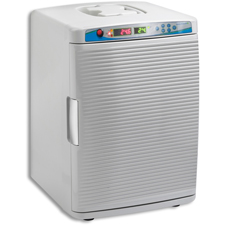 |
|
|
Membrane Dispensers
|
 |
|
| Microtiter/Microplate A microtiter, better known as a Microplate, is a small flat panel with multiple "wells" used as small test tubes. It is considered a standard tool in analytical research and clinical diagnostic testing laboratories. Microplates can be purchased in 6, 12, 24, 48, 96, 386 or 1536 sample wells arranged in a 2:3 rectangular matrix and are either rounded or square. For compound storage, it is recommended to use square wells with silicone cap-mats. Microplates are used widely in life science applications, including but not limited to:
|
 |
|
| Ovens Laboratory ovens are used for high-forced thermal convection applications and are known for providing uniform thermal temperatures throughout. They are typically used in the following applications:
|
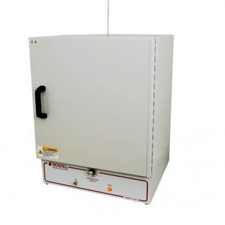 |
|
| Power Supplies Most common laboratory instruments have their own integrated power supplies allowing them to be plugged directly into an outlet. However, Physics and chemistry labs tend to need separate power supplies for basic equipment. There are 3 different types of power supplies used in these labs:
Shop Power Supplies |
 |
|
| Pumps Many labs that work with with large chemical volumes utilize drum pumps, the material depending on the chemicals being used. There are a variety of chemically resistant pumps for each application, including manual and electronic pumps. Shop Pumps |
 |
|
| Refrigerators/Freezers Labs usually require some form of refrigeration. Laboratory freezers range in size and intensity. ULT freezers (Ultra Low Temperature, between -40°C and -86°C) are commonly used in lab environments for long storage of biological samples such as DNA, RNA, proteins, cell extracts or reagents. If you're designing a “green” lab, carefully review the electricity consumption of various ULT freezers before purchasing. Some are significantly more energy-efficient than others. Shop Refrigerators/Freezers |
 |
|
| Rotary Evaporators Rotary evaporators are used in chemical labs to gently remove solvents from samples. They are frequently used with “low boiling” solvents such as n-hexane or ethyl acetate. The different pressure settings give the rotary evaporator more capabilities – water and other solvents with higher boiling points can be evaporated if there is enough low pressure. Most chemical laboratories have at least one rotary evaporator. |
 |
|
| Shakers Shakers are used in laboratories to mix and agitate samples. They can be purchased in a variety of sizes and formats. The features to consider when purchasing a laboratory shaker are platform size, capacity, display options, low-maintenance motor options, and type of shaking generated. Shakers offer different techniques including orbital, reciprocating and 3D shaking. Shop Shakers |
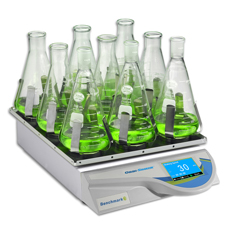 |
|
| Stirrers A magnetic stirrer is a very common item in laboratories. It has a rotating magnetic field to move a stir bar. They are most commonly used in chemistry and biology applications. The small stir bars used with stirrers are easy to clean and sterilize, unlike many larger stirring paddles. Stirrers can also be purchased with a heating element, so the hot plate will heat the solution while it is being stirred. Shop Stirrers |
 |
|
| Transilluminators Ultraviolet (UV) transilluminators are used in life science laboratories for visualization of target DNAs and proteins after electrophoresis. When looking to purchase a transilluminator it's important to take into consideration the viewing surface size for varying size gels, single or dual wavelength, and the dimensions of the benchtop unit. Shop Transilluminator |
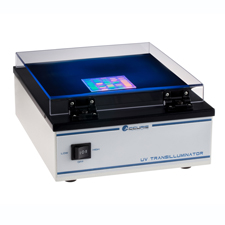 |
|
| Ultrasonic Cell Disruptors Ultrasonication utilizes the rapid sinusoidal movement of a probe within the liquid to reduce particle sizes. This function improves the overall uniformity and stability of mixtures. Ultrasonic Cell Disrupters are effective for DNA/RNA shearing, homogenization, cell lysis, nanoparticle dispersion, protein extraction, and general sample preparation. |
 |
|
| Ultrasonic Cleaners Ultrasonic cleaners use the same technology as the ultrasonic cell disrupters. They are excellent for cleaning laboratory glass and small objects. These machines are typically made with aluminum or stainless steel and consist of a tank, piezoceramic transducers, timers and temperature controls, drainer, electrical energy, rack or basket, and different operating modes. |
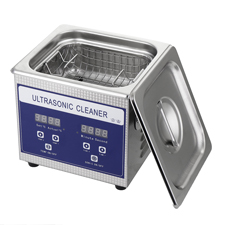 |
|
| Vortexers/Mixers Vortex Mixers are very common in bioscience (including cell culture, microbiology, biochemical, or analytical) laboratories and are used to mix small volumes of liquid for cell disruption or homogenization. This laboratory equipment can accommodate test tubes, vials, cylinders, and occasionally microplates. Vortex mixers have an electric motor with a drive shaft oriented vertically and attached to a cupped rubber piece. Shop Vortexers/Mixers |
 |
|
| Water Purification Systems It is extremely important to use properly purified water in the laboratory. There are a variety of different water systems to choose from including: reverse osmosis, deionized water systems, high glow lab, reagent grade and ultrapure. Depending on your application, you will need a specific kind of water filtration system. Some water filtration systems use UV radiation to eliminate microorganisms. |
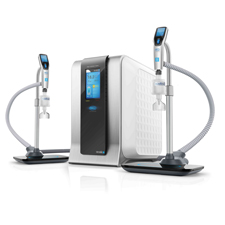 |

